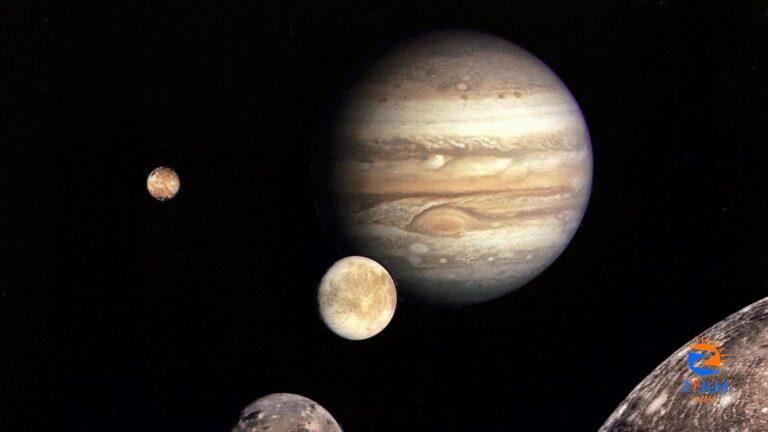
[ad_1]
Earth’s nearest satellite moon, has always been a spectacle for humans as it is visible in different shapes and forms. The moon is Earth’s only natural satellite, and it takes 27.3 days to completely orbit around the Earth. Space agencies like NASA have carried out multiple space programmes to the Moon to gather necessary information and have often shared images that capture the unexplored side of the Moon.
Here are top 10 images of moon shared by NASA.
NASA images of moon

View Full Image
This image of the Moon’s western hemisphere was captured by the Galileo spacecraft through a green filter on December 9 at 9:35 a.m. PST from approximately 350,000 miles away. At the center of the image is the Orientale Basin, a 600-mile-wide impact crater formed about 3.8 billion years ago by an asteroid-sized object.

View Full Image
The colourful photograph of the moon has been created by NASA with the help of 15 images taken through three color filters by Galileo’s solid-state imaging system on December 8, 1992.
At the time the images were captured, the spacecraft was 425,000 kilometers (262,000 miles) from the Moon and 69,000 kilometers (43,000 miles) from Earth.

View Full Image
The north polar region of the moon is near the top part of the mosaic, which also features, Mare Imbrium, the dark area on the left; Mare Serenitatis at center; and Mare Crisium, the circular dark area to the right. The image was captured under the Galileo project.
The primary task of the NASA project was to explore the Jupiter system in 1995-97.

View Full Image
The Galileo spacecraft captured these images of the Moon on December 7, 1992. The distinct bright ray crater at the bottom of the image has been identified as the Tycho impact basin.

View Full Image
The image captured by the Clementine spacecraft showcases the Moon illuminated solely by the light reflected from the Earth. Hence, it won’t be wrong to say that the moon is shinning bright because of Earthshine.
The glowing lunar horizon is the result of the solar corona and the sun is just behind the lunar limb. Caught in this image is the planet Venus at the top of the frame.

View Full Image
Mariner 10 captured the Earth and Moon together from 2.6 million km while completing the first ever Earth-Moon encounter by a spacecraft capable of returning high resolution digital color image data. The Mariner 10 mission is managed by the Jet Propulsion laboratory for NASA’s Office of Space Science.

View Full Image
The image captures moon’s surface with the shadow of Surveyor 1’s figure on it. The photo is the testimony of the first successful Surveyor mission to make a successful soft landing.

View Full Image
During the total solar eclipse, the Sun’s corona, only visible during the total eclipse, is shown as a crown of white flares from the surface. The red spots called Bailey’s beads occurs where the moon grazes by the Sun.

View Full Image
Lunar Orbiter 2 oblique northward view towards Copernicus crater on the Moon shows crater wall slumping caused by soil liquefaction following the impact that formed the crater. The crater is about 100 km in diameter.

View Full Image
The Moon is seen passing in front of the Sun during a total solar eclipse on Monday, August 21, 2017 from onboard a NASA Gulfstream III aircraft flying 25,000 feet above the Oregon coast.
3.6 Crore Indians visited in a single day choosing us as India’s undisputed platform for General Election Results. Explore the latest updates here!
Download The Mint News App to get Daily Market Updates.
Published: 28 Jul 2024, 10:42 AM IST
[ad_2]